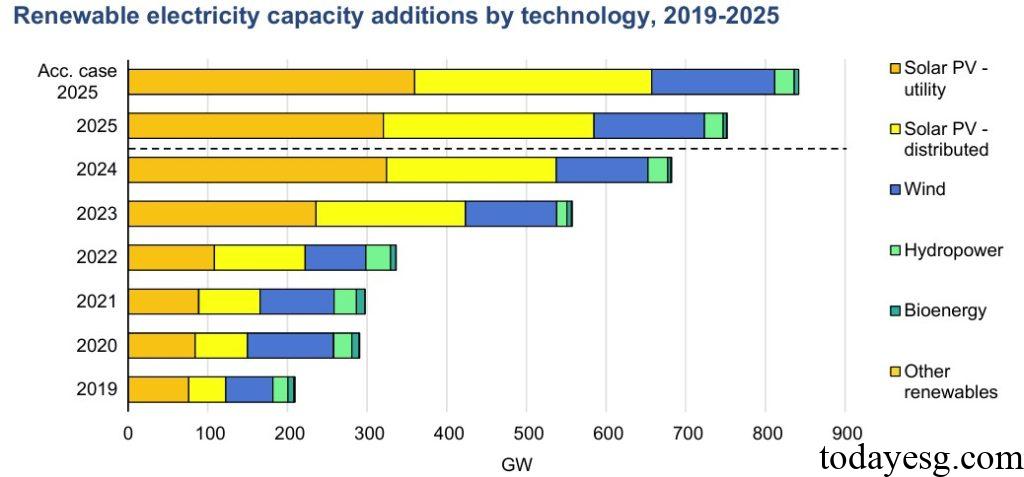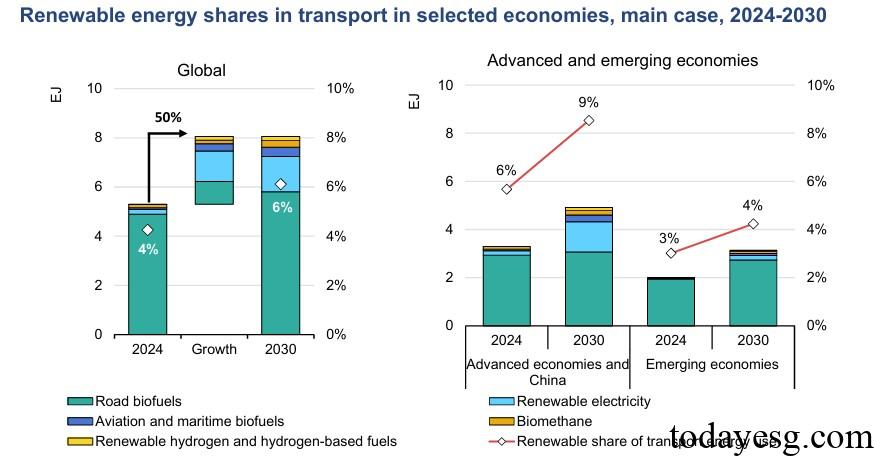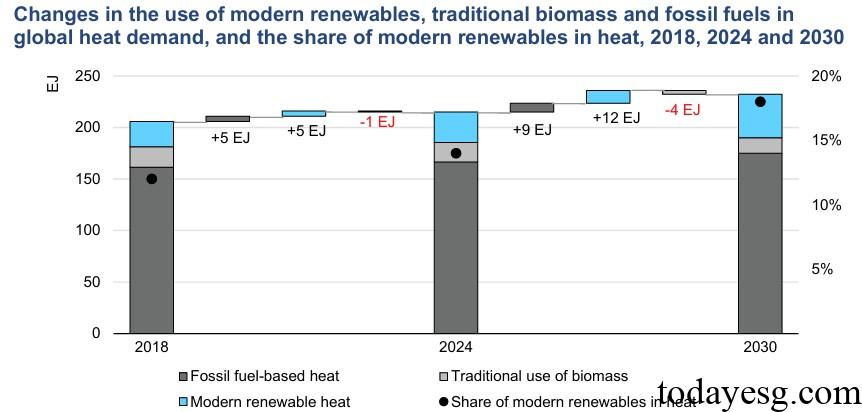2025 Renewable Energy Report
The International Energy Agency (IEA) releases 2025 Renewable Energy Report, which aims to analyze the development, challenges, and opportunities of the global renewable energy market.
This report predicts the deployment of renewable energy in the electricity, transportation, and thermal industries by 2030, as well as the impact of these industry policies and financial conditions on renewable energy.
Related Post: International Renewable Energy Agency Releases 2024 Renewable Energy Report
Renewable Energy and Power Industry
Since 2019, the global scale of renewable energy generation has more than tripled from 200GW, and by 2024, the global renewable energy generation increased by 22% to 685GW, reaching a historic high. It is expected to reach 750GW by 2025, of which photovoltaic power generation accounts for 80% of the total power generation. Wind power is expected to reach 139GW by 2025, accounting for 18% of the total power generation. Hydroelectric power ranks third, with an expected power generation of 23GW. The growth of bioenergy power generation is slowing down, with an expected scale of 4GW.

It is expected that the global scale of renewable energy generation will reach 890GW by 2030, with photovoltaic and wind power accounting for 96% of the total, as these two types of power generation have lower costs. This forecast has decreased by 5% compared to last year, due to policy, regulatory, and market changes. For example, changes in market-oriented trading of projects, contracts for differences, and tax credit policies may lead to changes in renewable energy investment by enterprises, affecting the development of the medium – to long-term market.
Renewable Energy and Transportation Industry
By 2030, renewable energy consumption in the transportation industry is expected to increase by 50%, with 45% coming from renewable electricity in electric vehicles, 35% from land-based biofuels, 10% from aviation and maritime fuels, and the remaining 10% from hydrogen fuel. The proportion of renewable energy use in developed economies will increase from 6% to 9%, while emerging market economies will increase from 3% to 4%. It is expected that by 2030, electric vehicles will account for 15% of the global total, with China’s electric vehicles accounting for one-third of the total.

Although biofuels are an important application of renewable energy, the biodiesel, renewable diesel, and sustainable aviation fuel industries still face low profits or even losses by 2025. Due to policy uncertainty and increased raw material costs, some companies are reducing production or shutting down operations. It is expected that biofuels will account for 8% of the total demand for transportation fuels by 2030.
Renewable Energy and Thermal Industry
The thermal industry accounts for half of the global energy consumption, with industry (55%) and construction (42%) accounting for a relatively high proportion. In 2024, renewable energy meets 14% of the global heat demand, but currently the heat demand mainly relies on fossil fuels. The development of renewable energy heating still lags the development of renewable energy electricity due to high heating costs and financial constraints for end-users. It is expected that renewable energy will meet 18% of global heat demand by 2030.

Reference:
IEA Renewables 2025
ESG Advertisements Contact:todayesg@gmail.com








